While history, culture and the great outdoors play a big role in setting our travel agenda, searching out epic wildlife encounters around the world is often a driving force in how we choose a destination.
There’s nothing quite like coming face to face with a wild animal in its own habitat to put some perspective around our place in the natural world. Or visiting a sanctuary for rescued animals to truly understand the profound hand we play in the fate of our wildlife, and our responsibility in ensuring its protection and future.
Some wildlife experiences leave a trail of adrenaline coursing through your body for hours afterwards. Others shake you awake and completely shift your point of view.
In this post, we’ve compiled 16 of our wildlife highlights from around the world. Some of them are in just about every self-respecting bucketlister’s pail. Others are a little more offbeat.
All of them were a genuine thrill, and a humbling reminder of nature’s diverse beauty, along with the impact we homo sapiens have on it, for better and for worse.
Here they are, in no particular order.
16 Of Our Favourite Wildlife Encounters Around The World
1. Mountain gorillas in Rwanda
2. Marine iguanas in the Galapagos Islands
3. Penguins in Antarctica
4. Komodo dragons and manta rays in Indonesia
5. Black bears on Vancouver Island
6. Blue whales off Sri Lanka
7. Orangutans in Borneo
8. Wild tigers in India
9. The Resplendent Quetzal of Costa Rica
10. Rescued elephants in Chiang Mai
11. The holy rats of Karni Mata, India
12. Wild cheetahs in Kenya
13. Whale sharks off Mexico
14. Tiny creatures of the Amazon
15. Humpback whales in Hervey Bay, Australia
16. Africa’s ‘Ugly Five’
1. Sharing a moment with a family of mountain gorillas in Rwanda
To this day, our time with a wild gorilla family remains one of the most exhilarating and poignant hours we’ve experienced. Ever.
Our journey to reach the troop – a research group dominated by a huge silverback – involved an epic, three-hour, uphill hike through the high-altitude jungle of Volcanoes National Park in Rwanda.
It was sweaty, hard-breathing, off-trail climbing, punctuated by stinging nettles and shoe-sucking mud.
Seeing the gorillas for the first time though, gathered around their patriarch, was an adrenaline-charged moment that neither of us will forget for the rest of our lives.
Trekking to see wild gorillas is a once-in-a-lifetime wildlife bucket list experience (maybe twice if we have our way), and the cost reflects it, particularly in Rwanda. The investment is 100% worth it though: responsible tourism has had, and will continue to have, a fundamental role to play in the future of these majestic animals.
Finally, after years on the brink of survival, the gorillas of the Virunga mountains are slowly making a comeback.
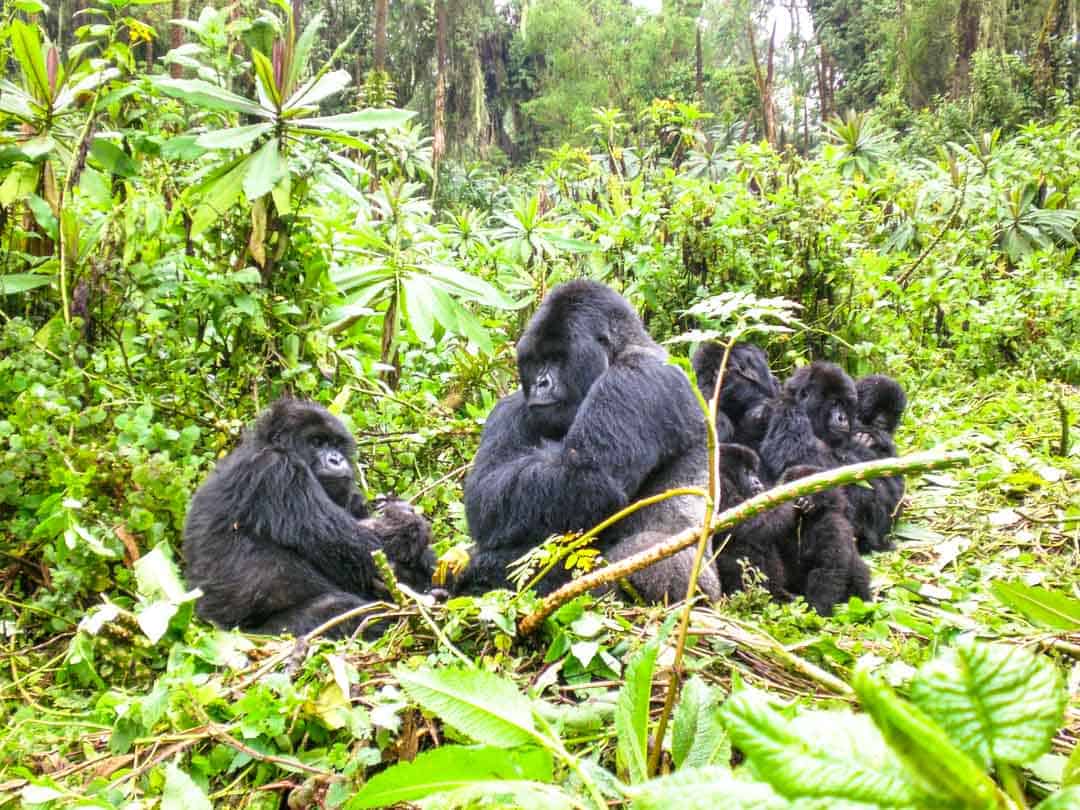
Good to know: We visited the mountain gorillas of Rwanda as part of a 16-day overland tour with Intrepid Travel. The tour we did has since changed format and now includes a gorilla trek in Uganda instead of Rwanda; there’s also a dedicated trip to visit gorillas in Rwanda.
Read the full story of our gorilla trek here.
2. Paying homage to the sun with the marine iguanas of the Galapagos Islands
It isn’t difficult to imagine the wonder of a young Charles Darwin when he first stepped ashore on the fantastical Galapagos Islands.
This remote and beautiful Pacific Ocean archipelago off Ecuador is legendary for its unique and unusual wildlife, and their fearlessness around humans.
We had the opportunity to travel to ten of the islands over a two-week period. While wildlife highlights from every one of them abound, without doubt one of our favourite characters was the quirky, sun-loving marine iguana.
Unique among today’s lizards for their sea-going abilities, and different to each other depending on their island home (there are seven sub-species), these cold-blooded creatures spend a good part of their day basking on rocks in large groups (fittingly called ‘lounges’) to warm up.
Incidentally, Darwin hated the iguanas; he called them ‘imps of darkness’. But maybe ‘lords of light’ would be more fitting.
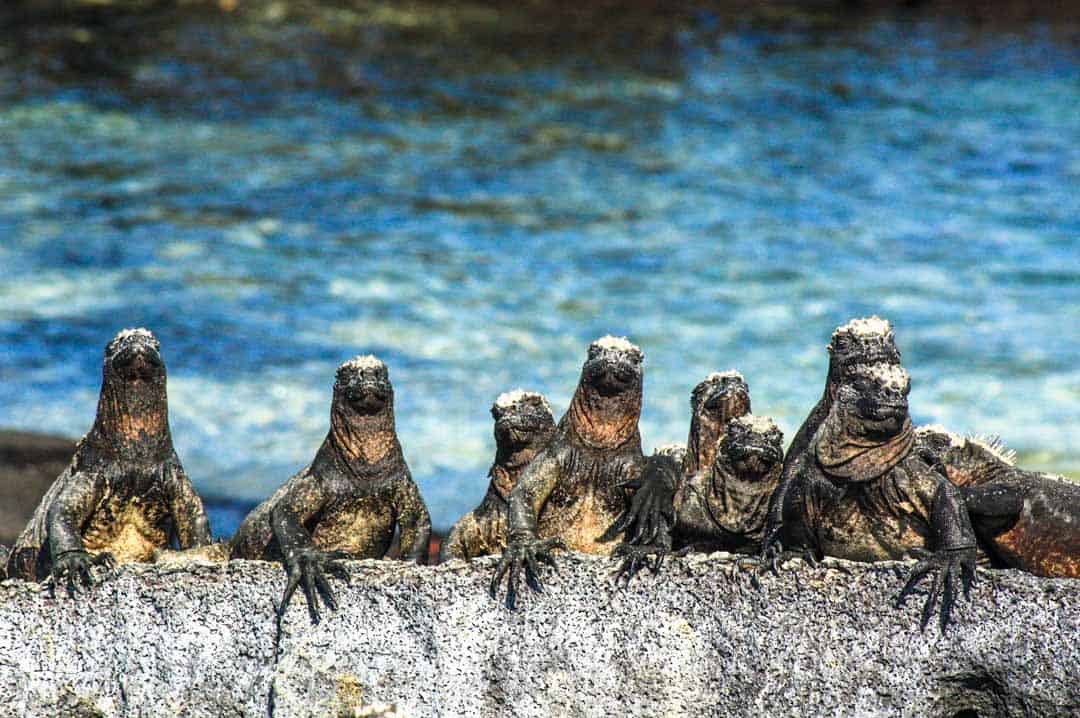
Good to know: We organised a lastminute deal on an unforgettable yacht cruise around the Galapagos Islands with the help of the wonderful crew at Happy Gringo Tours in Quito, Ecuador.
Check out our other posts on the Galapagos Islands here.
3. Chilling with penguins in Antarctica
Icy cold, desolate, dark for half the year; you could be forgiven for thinking Antarctica was a wildlife desert. And technically, you’d be right.
Despite all that snow and ice, Antarctica is – on average – the driest continent on Earth. And while the land itself might not be particularly hospitable to life, its icy shores and the seas that surround it, are positively thriving.
Perhaps the most recognisable of Antarctica’s wildlife, certainly the cutest, are the penguins. Six of the world’s 17 penguin species can be found here, and we were thrilled to encounter three of those species when we visited the Antarctic Peninsula – Gentoo, Adelie and Chinstrap penguins.
The best time to see penguins in Antarctica is between December and February, when they waddle onto land to breed and raise chicks.
By the time we visited in March, most of the adult penguins had left the colonies. But there were still hundreds of delightfully fluffy, dishevelled chicks shaking off the last of their down, before heading out for a life at sea.
Vast, pristine and spectacularly beautiful, the wildlife experience on our southernmost continent is truly second to none.
Good to know: Our 10-day trip to the Antarctic Peninsula started and finished in Ushuaia in the far south of Argentina.
4. Marvelling at dragons and mantas in Komodo National Park
The islands of Komodo National Park in Indonesia are justifiably famous for their fearsome endemic lizard, the notorious Komodo dragon.
Our guided hike on Rinca Island, with these menacing monitors watching from the nearby brush, was among the more nervous wildlife walks we’ve done in our day.
Not that attacks on humans are common. Still, we took some comfort in the long, forked pole our guide carried as we wandered the island’s grassy hills, pausing occasionally to watch females tend their nest pits and big males bask in the sun.
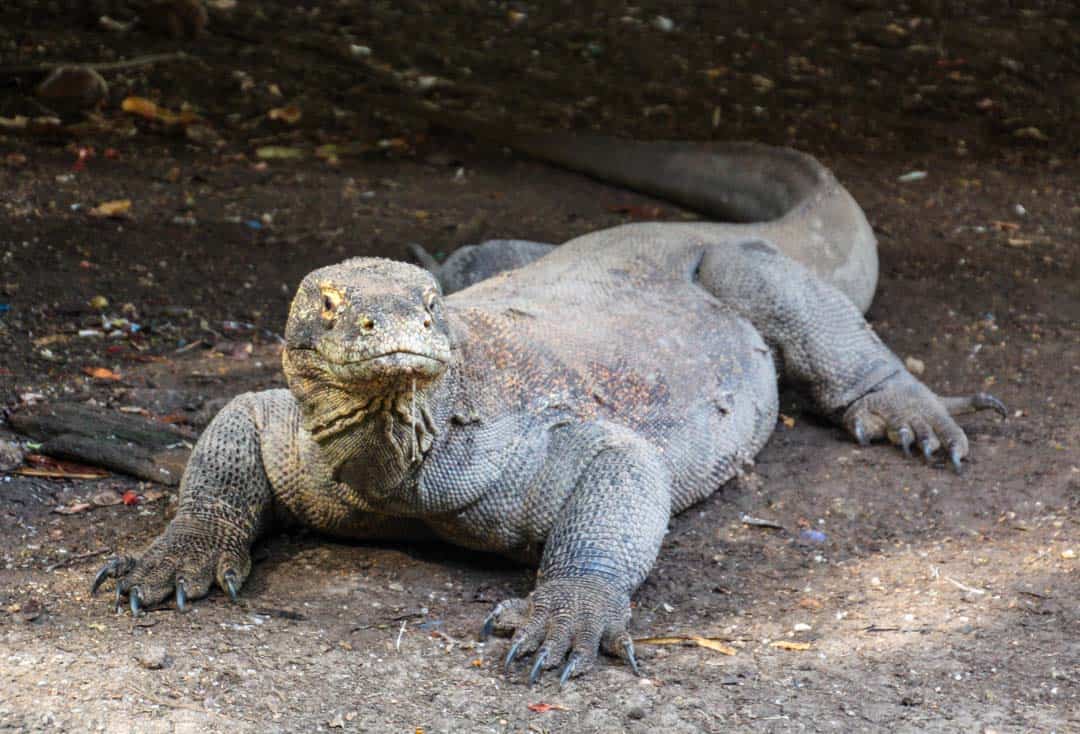
However, we were also drawn to this vast national park for what lay beneath the waves of the archipelago. The beautiful reefs of Komodo are said to be among the best in the world, and we had manta rays on our wildlife bucket list.
We spent five days on a diving liveaboard, exploring Komodo’s thrilling, high-current dive sites in search of these graceful birds of the sea.
In the end, we had several magical encounters with the majestic – and vulnerable – winged creatures; moments in which time, and the wild currents, seemed to stand still.
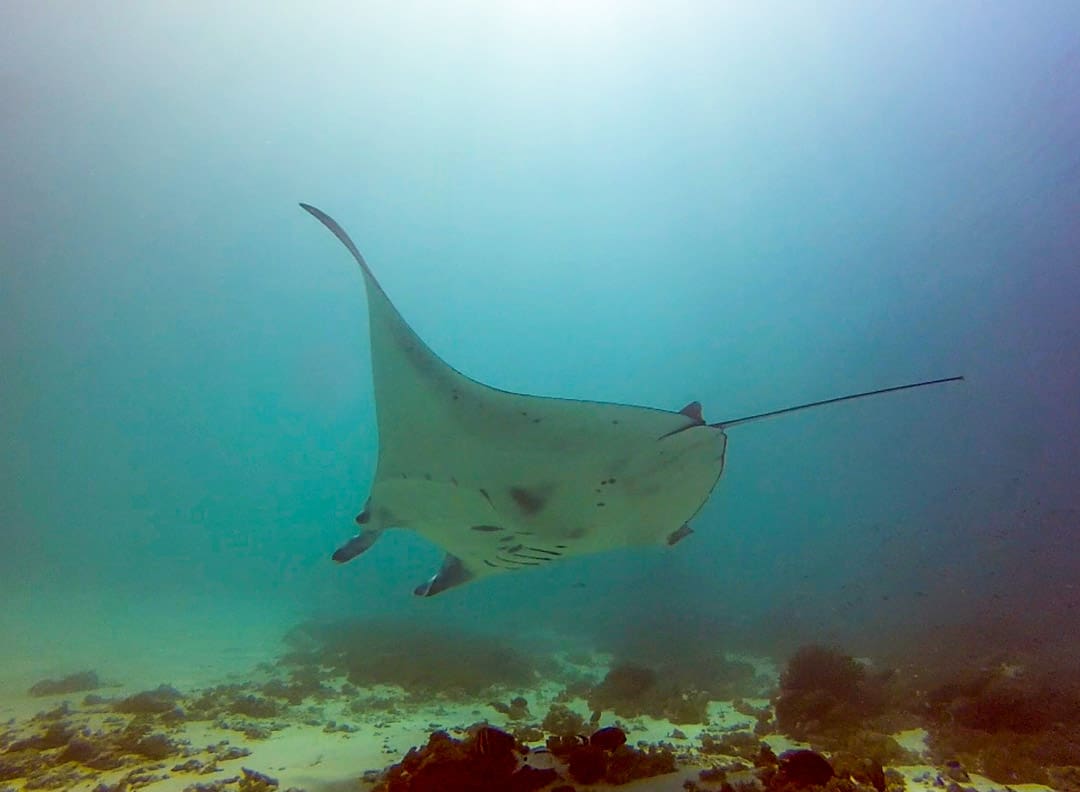
Good to know: We visited Komodo dragons and dived with mantas as part of a 5-day/4-night liveaboard trip aboard out of Labuan Bajo in Flores, Indonesia.
Find out what else we saw in Komodo’s seas in this article.
5. Getting up close with black bears on Vancouver Island
Fresh clams are a daily luxury when you’re a coastal black bear on Vancouver Island in Canada.
Some 7,000 black bears call the vast island home, foraging in the forests, by the rivers and along the extensive shorelines.
While we were hopeful of encountering a black bear during our road trip around Vancouver Island, we weren’t particularly keen on that meeting taking place on a hiking trail.
Or on the road, which subsequently happened en route to the island’s north (I hit the brakes and the bear promptly hightailed it back into the woods; no harm done, just a massive adrenaline rush).
Instead, we decided to join a zodiac boat tour out of the western town of Ucluelet. Sealed up in boiler suits against the morning chill, we set out in a 12-seater zodiac to cruise the coastal nooks and crannies of Berkeley Sound, in search of hungry bears.
We spotted four bears on our trip; each time, the captain would bring us within a safe distance, stop the engine and we would drift silently nearby, watching as the bears scoured the shoreline for crabs, and shucked oysters straight off the rocks.
The bears were mostly indifferent to our presence, an outcome the company aims for. The goal of the tours is to observe the bears in their natural habitat, but never get so close or loud that we affect their behaviour.
To witness a wild bear getting on with its day, without risk, is mesmerising. As placid as they look rummaging the shoreline for breakfast though, when one bear suddenly stopped and locked eyes with us across the water, we were grateful for the distance between us.
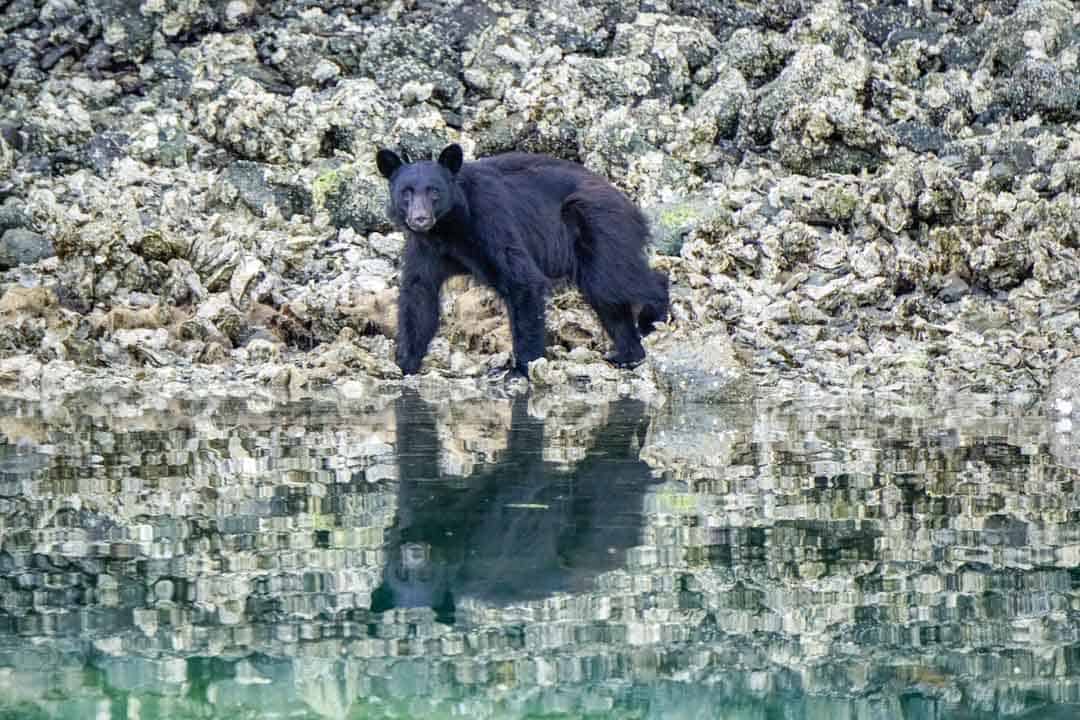
Good to know: Several companies run bear watching zodiac tours out of Ucluelet on Vancouver Island.
6. Feeling small in the wake of Sri Lanka’s blue whales
Blue whales are the largest living animals on Earth. You’d think this would make them relatively easy to find in the wild, but these shy and elusive mammals prefer the peace and anonymity of the open ocean.
Just off the coast of southern Sri Lanka, however, these titans of the sea gather in significant numbers not far offshore to feed on abundant krill, making this the world’s top spot for blue whale sightings.
As a result, a plethora of whale watching tours depart the dock at Mirissa each day to bring visitors almost within blow-distance of a giant.
These days, the stretch of sea where the whales congregate is also a busy shipping channel, which sometimes leads to deadly encounters between the whales and surging cargo ships.
This is where responsible local tour operators like Raja & The Whales play a critical role: monitoring ships in the channel, gathering and providing research on the whales, and leading the way in best practice among local whale watching boat operators.
We found Raja and his crew after extensive research into the local companies running whale watching tours.
Passionate, conscientious and a warrior for the protection of Sri Lanka’s marine wildlife, Raja ensured our blue whale encounters were every bit as exciting, awesome, responsible and respectful as this leviathan of the deep deserves.
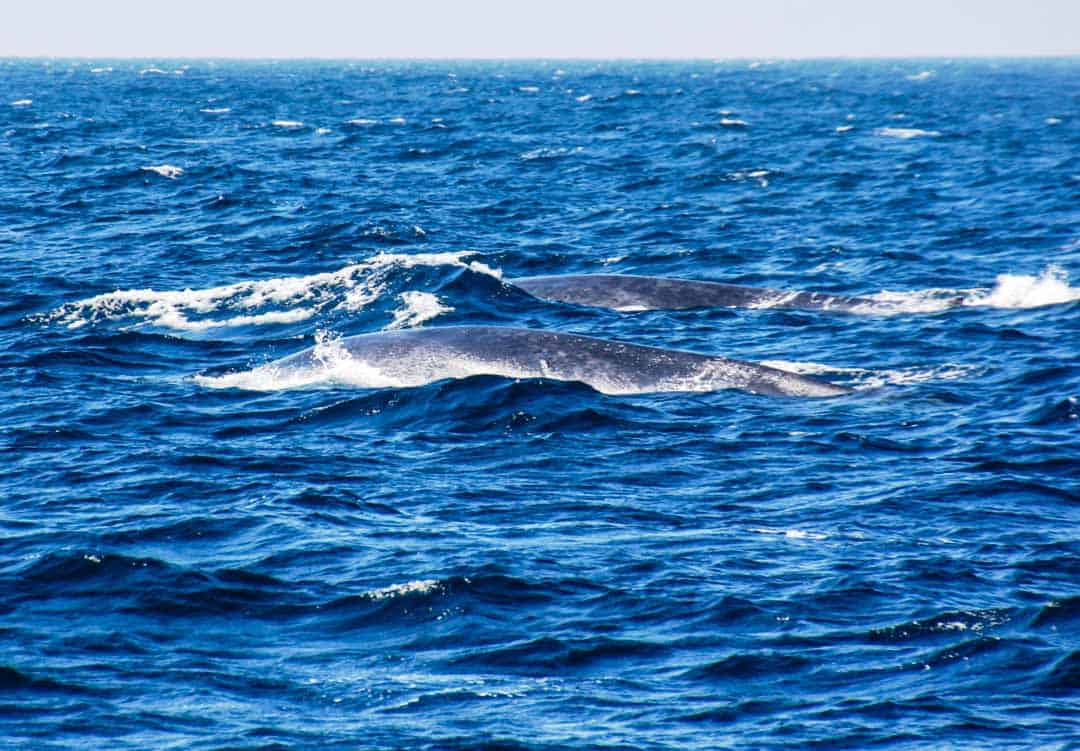
Good to know: Raja & The Whales is based at Mirissa in Sri Lanka’s south.
7. Hanging out with cheeky orangutans in Malaysian Borneo
Our first encounter with an orangutan was comically ironic: as John looked out through the bars of the observation building at Sepilok Orangutan Rehabilitation Centre in Malaysian Borneo, a young orangutan wandered over from the nearby trees, placed his hands on the bars and stared in at him.
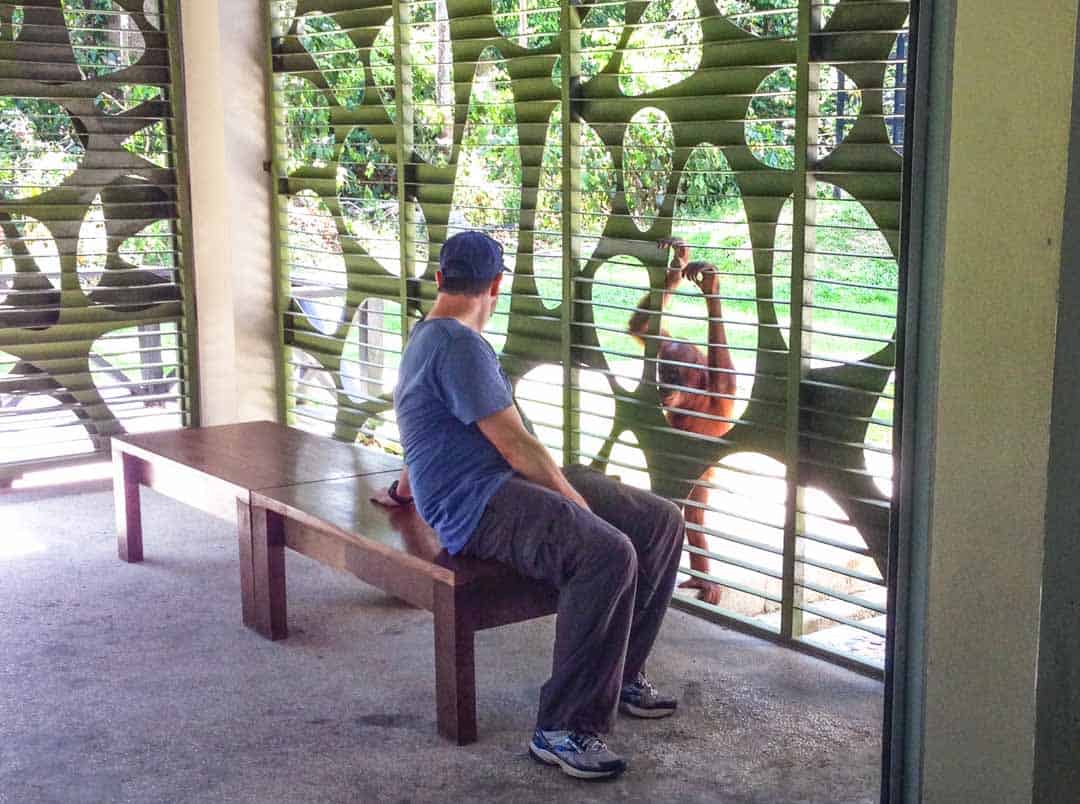
For more than fifty years, the centre in Sabah has been taking in orphaned and rescued orangutans, rehabilitating them and releasing them back into the wild.
While many stay close to the centre, the orangutans have more than 4,000 hectares of protected reserve to range in; not a large space, but critical habitat on an island where more and more of the jungle is being cleared each year for palm oil plantations.
We whiled away hours at the centre, watching adults come in for fruit salad lunches, and playful youngsters learning the art of climbing and swinging on a large frame.
Later in our trip, we were lucky enough to spot a wild mother and baby high up in the trees at our lodge on the Kinabatangan River. We were thrilled to see them but anxious for them too: the future is uncertain for this remarkable and intelligent species.
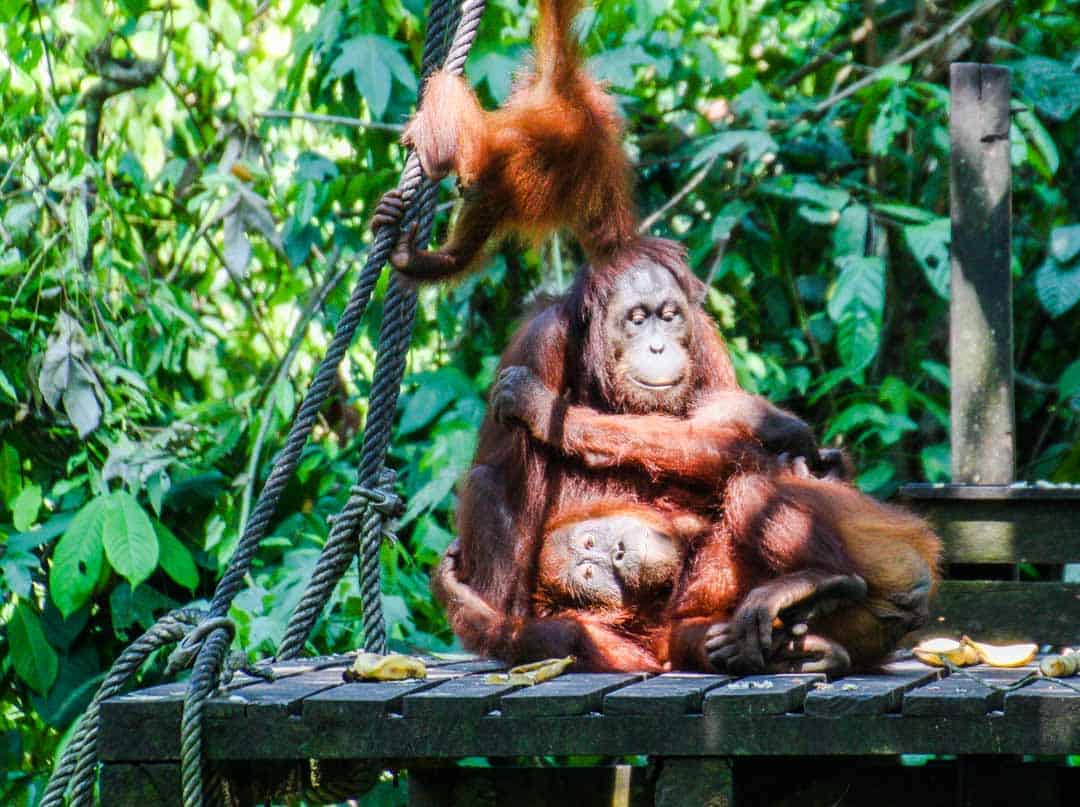
Good to know: We made a point of staying near to the Sepilok Orangutan Rehabilitation Centre, which allowed us to spend more time in the park after the tour groups had moved on.
8. Spying a wild tiger in the Indian jungle
Researching things to do while travelling through the state of Rajasthan in India’s north, we were surprised to discover that India has the largest population of wild tigers in the world. And that you can safari to visit them.
Soon enough, we were bouncing around at dawn in an open-top jeep through Ranthambore National Park, a 1,300 square-kilometre stretch of Bengal tiger sanctuary in the state’s east.
For two mornings in a row, rugged up against the chill, we rumbled through a stunning landscape of woodland, jungle, scrubby plains and ruined forts.
Ranthambore, once a hunting ground for maharajas, is a chance to experience wildlife of all kinds: we spotted birds, deer, mongoose, crocodiles and macaques as we scanned the environment for glimpses of tiger.
The only sign we had of the elusive big cat though, was one perfectly formed pug mark in the dirt by the roadside.
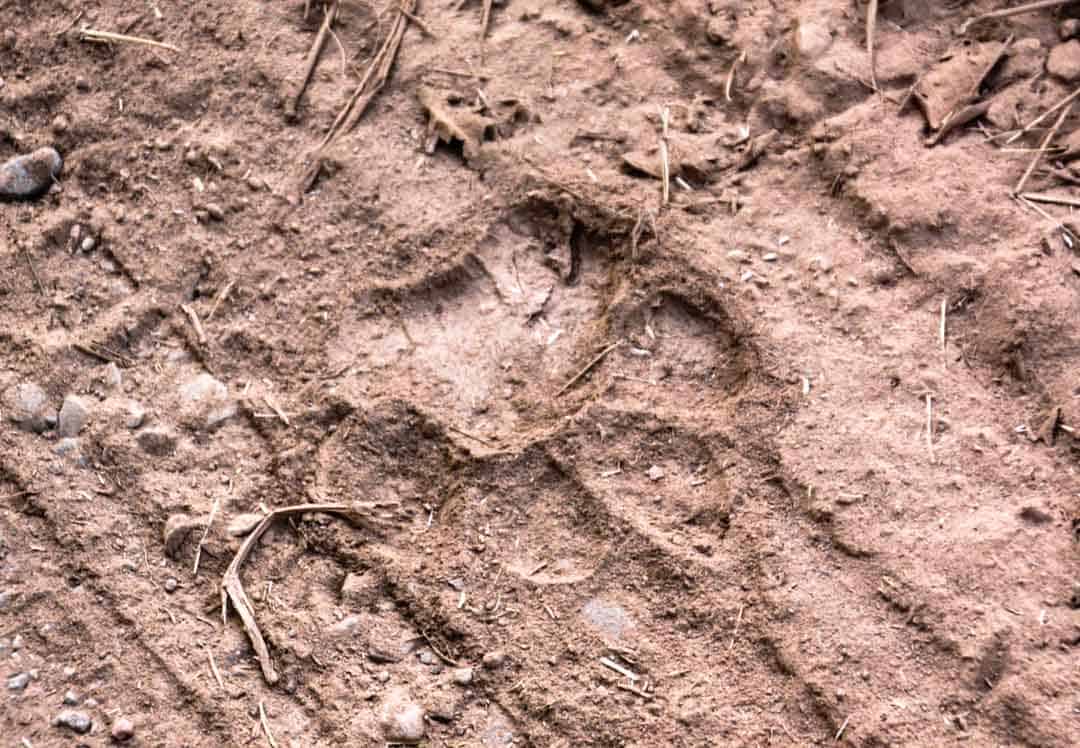
Then, just as we were making our way to the park exit on our second day, resigned to the idea that we wouldn’t be seeing wild tigers on this trip, we spied one.
In an open space among the foliage, a large, striking tiger lounged in the sun, oblivious to the excited gathering of people nearby.
Being close to the park gate, the sighting soon attracted a huge number of people, an aspect of the experience that rang alarm bells for us. Fortunately, the park rangers ensured everyone kept their distance, but it was disconcerting all the same.
How enterprises manage tourism numbers is an important factor to consider when researching wildlife experiences.
While the tourist dollar is critical in supporting sanctuaries that protect at-risk species, and while encounters like this are critical for growing connection, awareness and respect, the need to manage tourist numbers, and human impact, is paramount.
Still, in a world where poaching, habitat decline and human conflict have driven these magnificent creatures to endangered status, having the chance to see a wild tiger at all, in a place actively taking on the fight to save them, was a true privilege.
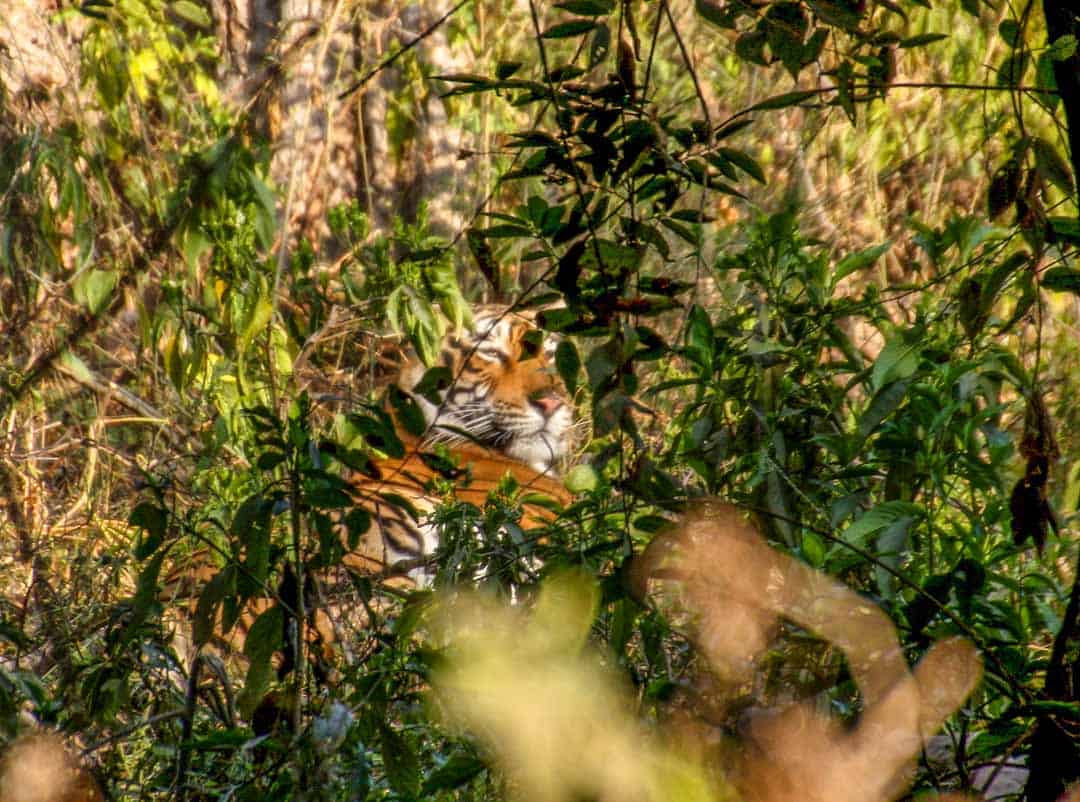
Good to know: Ranthambore National Park is around four hours south of Delhi. We stayed near the park and organised our daily morning jeep safaris through our hotel.
9. Waiting out the fabled Quetzal of Costa Rica
A natural bridge between North and South America, Costa Rica is one of the most biodiverse countries on Earth.
We were already excited about the wildlife viewing opportunities here, but with over 840 species of bird, we soon realised we’d landed in a birder’s nirvana.
One of the most beautiful and elusive of Costa Rica’s birds is the Resplendent Quetzal. Once sacred to the Aztecs and Maya, the quetzal’s long, sweeping tail feathers were highly prized for use in royal headdresses.
As a bird nerd from way back, I was on a mission to spot this avian el dorado while we were in the country, and we spent several mornings wandering the cloud forests of Monteverde, both on our own and in the company of a sharp-sighted birdwatching guide.
When other groups moved on, we waited, and our patience eventually paid off: we were treated to not one but four of the vibrant beauties.
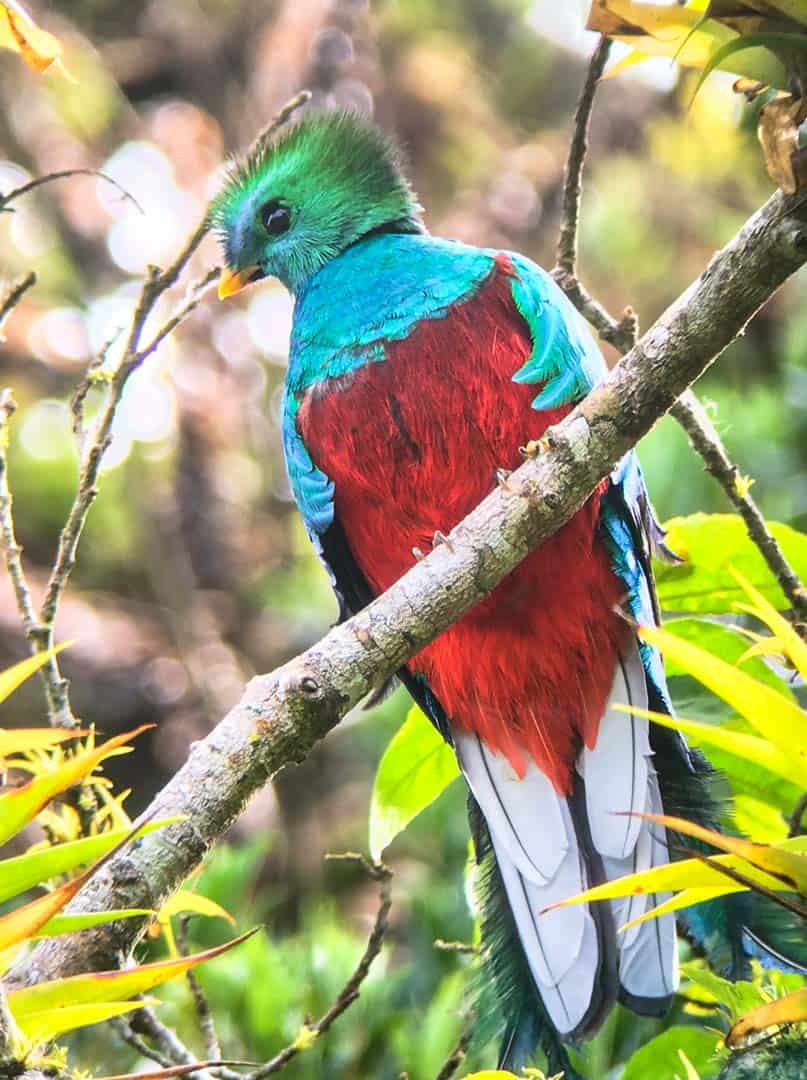
Good to know: Monteverde is around 140km north-west of the capital, San Jose. Nature and birdwatching guides can be organised through your hotel, or ask for our awesome birdwatching guide, Adrian Arroyo.
Check out our top 5 recommended parks for nature and wildlife in Costa Rica.
10. Meeting rescued elephants at the Elephant Nature Park in Chiang Mai, Thailand
Medo, a female Asian elephant around my age, slowly and awkwardly crossed the paddock towards us, trailing her pachyderm bestie, Mae Lanna. Her sloping, misshapen back was immediately obvious, the result of a logging injury when she was young, followed by a dislodged spine thanks to forced breeding when she could no longer haul wood.
Medo was one of the first residents we met at the Elephant Nature Park in Chiang Mai, and her story of abuse is sadly all too common among the diminishing elephants of Asia.
Asian elephants number less than 30,000 today. Around 10% of these are in Thailand, and of those, maybe half still live wild. The rest are domesticated for tourism, illegal logging work, even begging in the streets. More often than not, these working elephants live lonely, abused, painful lives. Elephants used for tourism often suffer exhaustion, stress and neglect.
Riding an elephant might look like fun, but the reality is their backs aren’t designed to carry our weight, and the process to tame and train them for tourism – called “the crush”, and carried out while they’re still very young – is both brutal and cruel.
The Elephant Nature Park in Chiang Mai was established in the ’90s to provide rescue, rehabilitation and sanctuary for mistreated Asian elephants.
One of the key tenets of the park is education – for visitors, locals and elephant handlers (called mahouts) – to raise awareness and standards for the care and protection of elephants. As part of this, the park offers a range of programs from day visits to week-long volunteering stints.
We spent a day at the park learning about the plight of domesticated elephants, meeting the pachyderm residents, feeding them fruit and joining them for a splash in the local river.
The aim of the sanctuary is to give its rescued animals the best shot at recovery from their abusive pasts, to form their own social groups, and to live relatively normal, stress-free lives. Whether you spend a day here or a week, this is one animal experience that will leave a mark.
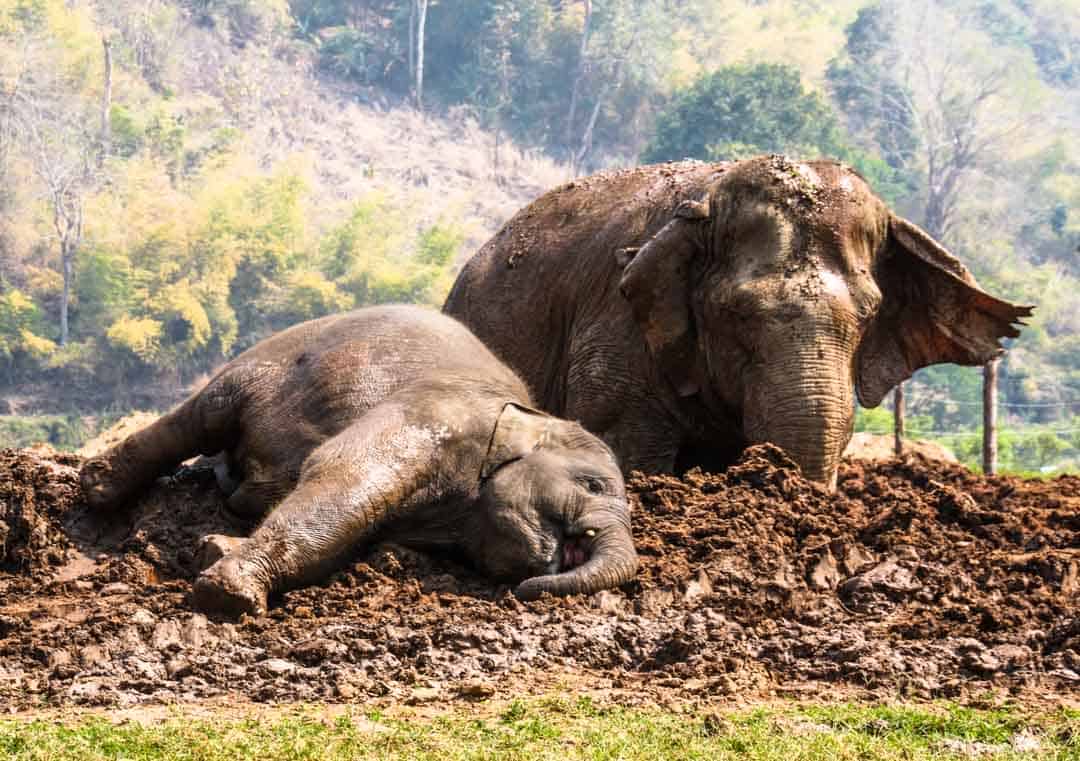
Good to know: The Elephant Nature Park is around 70km from Chiang Mai in Thailand’s north; transport to and from the sanctuary can be included in your visit.
In 2018, Dan travelled to India on behalf of NOMADasaurus in collaboration with Trafalgar Travel and The TreadRight Foundation, to learn more about the plight of captive elephants, and help spread the word about what we can do as travellers to support ethical, responsible wildlife tourism. Read the story here.
11. Tiptoeing among the holy rats of Karni Mata in India
If you’re musophobic, you might want to skip this entry altogether. Possibly our most offbeat animal experience ever, this creature feature isn’t for those with a fear of rodents.
You see, life is good if you’re a rat in Deshnok. In fact, in this small desert town, a little over 500km west of India’s capital, Delhi, rats have achieved a complete character makeover. They’re believed to be holy.
Temples dedicated to animals are common in India, where millions of gods and goddesses roam the Hindu pantheon, some taking on the features of animals such as elephants and monkeys.
At the temple in Deshnok, rats are believed to be the earthly incarnations of the temple’s namesake, Karni Mata, a sage and healer with mystical powers, who is said to have lived in the area some 500 years ago.
People travel from far and wide to make offerings to the rats of Karni Mata, and to watch out for the temple’s auspicious albino rats.
Whether you’re there to make an offering, or to simply learn more about this intriguing, offbeat place, tiptoeing across the temple’s tiled marble floor – barefoot, no less – as hundreds of rats scuttle about at your feet, is an experience you’ll relive for a long time afterwards. Hopefully not as nightmares.

Good to know: We travelled to Deshnok as part of a month-long road trip around Rajasthan, Uttar Pradesh and Madhya Pradesh. To save time, see more and get off the beaten track, we hired a driver and 4WD.
Check out our Rajasthan road trip itinerary here.
12. Watching a wild cheetah learning to hunt
Cheetahs may not be members of Africa’s Big Five club, which includes lions, elephants, leopards, rhinos and buffalos (all of which are epic wildlife encounters in their own right). But these big cats are certainly among the contenders for most graceful animal on the continent.
Clocking upwards of 110km per hour, cheetahs are the world’s fastest land animal, and watching one hit full stride in a chase – even if it’s just practice – is nothing short of breathtaking.
Our first encounter with cheetahs was on safari in Kenya’s Masai Mara National Reserve: we came upon a mother and her fluffy cub resting together under a tree.
Later, we came upon the duo again, this time play chasing as mum taught her baby to stalk, race, dodge and weave in preparation for a life hunting swift-running prey like gazelles and impalas.
Poaching, loss of habitat, and conflict with humans, along with a painfully low survival rate of just 5% for cubs, have led to the listing of this magnificent creature as vulnerable.
With less than 7,000 thought to be left in the wild, any encounter with a cheetah is a moment to treasure.
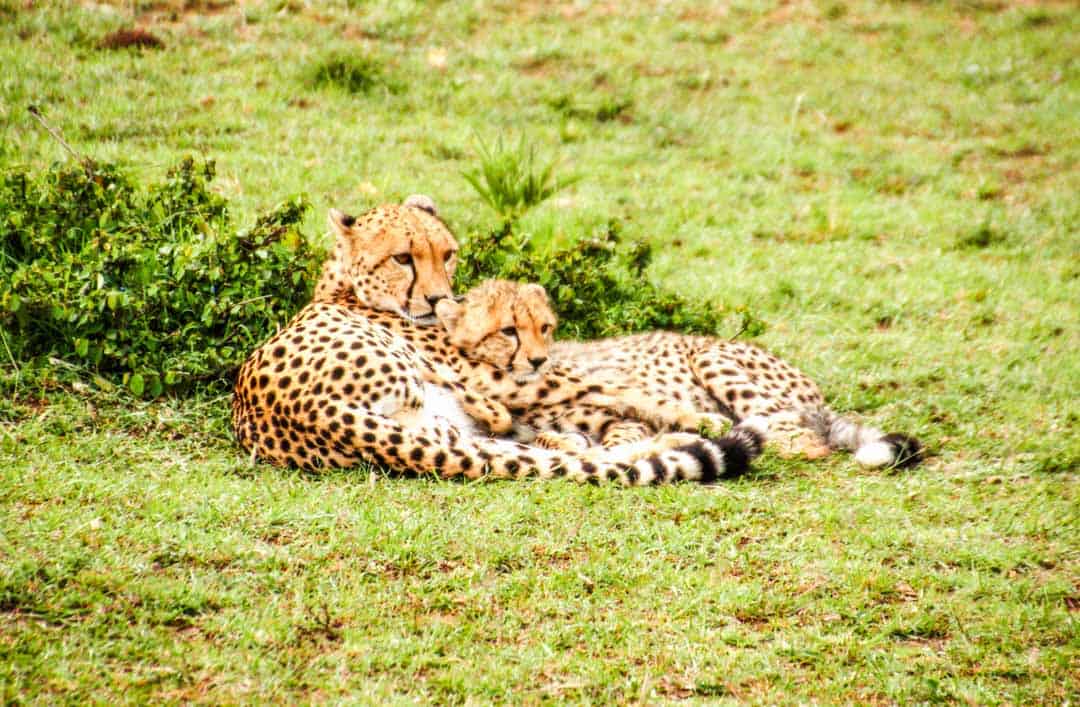
Good to know: We stayed in a permanent tent at the lovely, low-key Aruba Mara Camp on the edge of the Masai Mara National Reserve, which included daily wildlife safaris in the park with a local Masai guide.
Check out the other wildlife we spotted on safari in our Masai Mara post.
13. Swimming with whale sharks off Mexico
At up to 12-metres long, whale sharks are the biggest living fish on Earth. So sidling up to one with a snorkel as it cruises beneath the surface of the sea has to rank as one of the most thrilling big wildlife encounters you can have.
Our experience with these gentle giants off the coast of Mexico’s Yucatan peninsula was unforgettable, but it also gave us a lot to ponder in terms of what constitutes an ethical and sustainable wildlife experience.
The fact of the matter is, while it may have been perfectly tranquil beneath the waves, the same couldn’t be said for the boats-and-bodies chaos on the surface.
Despite extensive efforts to moderate the industry, there’s still much work to be done in some places to contain the already significant – and increasing – numbers of boats and tourists making this wildlife pilgrimage.
That said, this was an absolute highlight wildlife encounter for us. Done right, it’s an experience worthy of every bucket list. Just do your research before you commit.
Good to know: There are dozens of operators running whale shark tours out of Cancun. We signed up with one company, but ended up travelling with a completely different operator on the day.
Read our full write up on swimming with whale sharks in Mexico.
14. Meeting the tiny creatures of the Ecuadorian Amazon
While bucket list wildlife adventures often focus on the big, bold and beautiful creatures of our natural world, there’s something to be said for the tiny critters that go largely unnoticed.
Small they may be, but even nature’s tiniest animals have a fundamental role to play in the circle of life.
In our experience, one of the best places to get acquainted with nature’s arsenal of awesome small things is in the Amazon jungle; we did just that at a place called Sacha Lodge, deep within the Ecuadorian Amazon.
There, we joined a naturalist and an Indigenous guide for morning and nighttime jaunts into the forest in search of the tiny beasties of the Amazon.
Our finds included fingernail-sized poison dart frogs, giant millipedes and stick insects resembling small branches. Huge bullet ants patrolled the forest floor, while tiny bats sheltered in the hollows of rotted trunks.
Above us, the forest’s larger animals – birds, monkeys and sloths – hid amongst the foliage, revealed only by our eagle-eyed guide.
The wildlife encounters in the Amazon might be a little more low-key, but this is one of the most ecologically diverse systems on Earth and as wildlife highlights go, an unforgettable immersion in one of our wildest places.
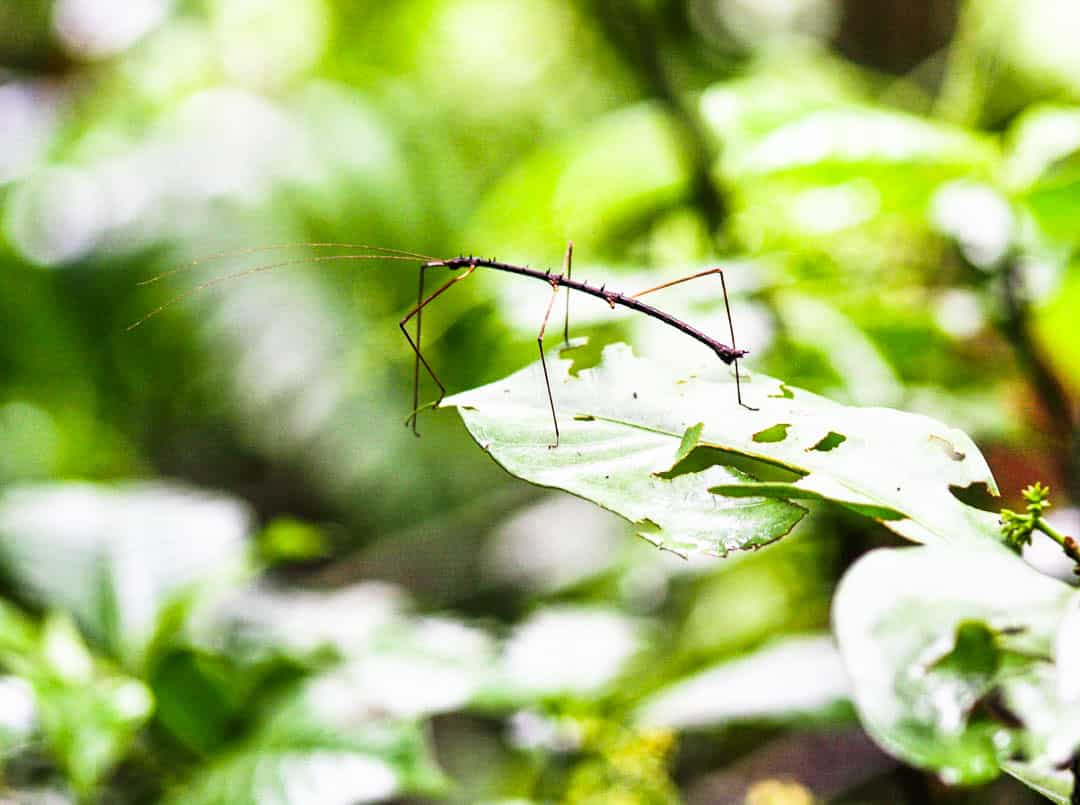
Good to know: We travelled by plane, river boat, foot and canoe to reach Sacha Lodge in the Ecuadorian Amazon. Transport to and from the lodge is arranged as part of your stay, as are daily guided tours into the jungle.
Click here for the full story of our Amazon adventures.
15. Watching humpback whales breach in Hervey Bay, Australia
Over winter and spring each year, thousands of humpback whales make a marathon journey from their feeding grounds in Antarctica to the tropics of north-eastern Australia, where they mate and give birth. A couple of months later, they make their way back again.
Hervey Bay, a sheltered expanse of water 3.5 hours north of Brisbane in Australia, is popular stop off point for the whales as they make their way north and south.
Whales start arriving in Hervey Bay from late July each year, so we were still relatively early in the season when we joined our boat one early morning in August.
As with any wildlife watching experience, there’s a chance that the animals have better things to do on the day you’re out looking for them, and we deliberately kept our expectations low.
Suddenly, a whale was spotted. Then another. And another. Within a matter of moments, we were surrounded by eight young male humpbacks, all of them curious, playful and particularly interested in our boat.
For the next hour or so, the whales spyhopped, tail slapped, waved their flukes and delivered some breathtaking breaches to the gasps and applause of everyone on board.
Then, just as unexpectedly as they’d arrived, they were gone, and we were left with the wild exhilaration that comes from feeling that, for one moment at least, we were a part of their world.
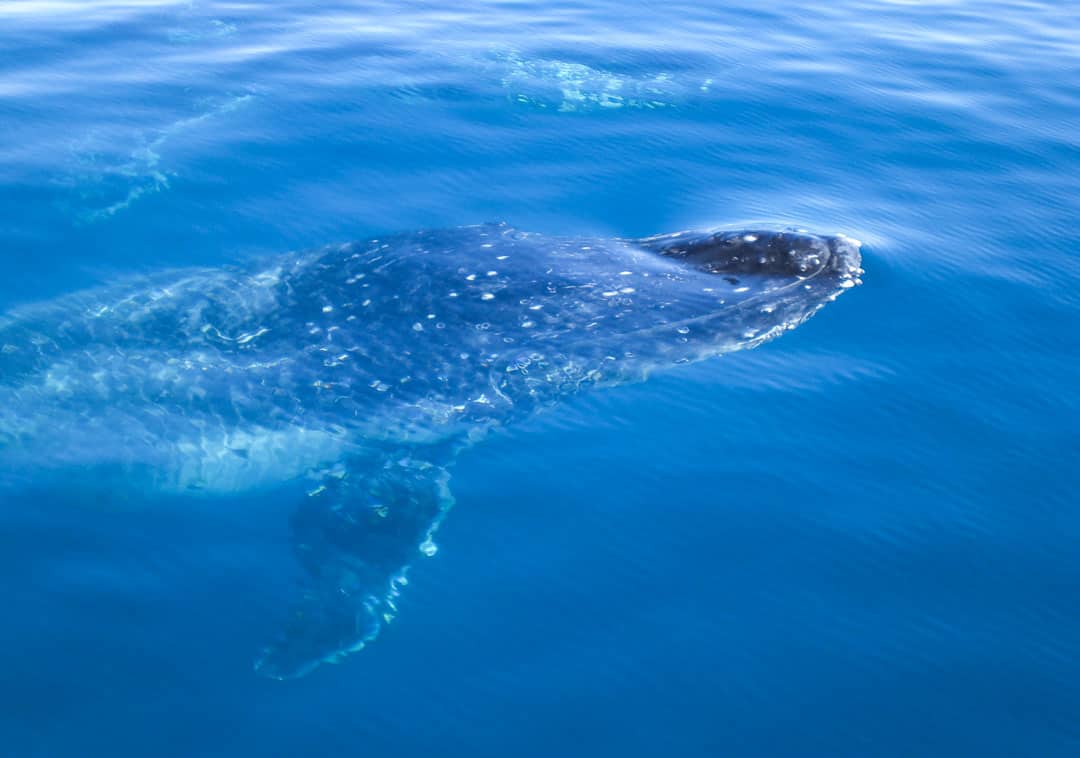
Good to know: We joined a small-group, eco-certified operator out of Hervey Bay for an all-day whale watching tour.
16. Appreciating the ‘Ugly Five’ on Safari in Africa
“I’m here to see the Ugly Five,” said no tourist ever. Which is a shame, really, because some of Africa’s most unattractive wild creatures are also some of its most interesting characters.
Take the wildebeest, for example. Hanging out with some 2 million mates, these gangly, long-faced antelopes spend their entire lives on one epic circular, migratory journey, forever in pursuit of greener pastures.
What about the bald, bad-mannered vultures, who can smell death a mile away and swoop in to act as nature’s garbage disposals? Or the Tim Burton-esque Maribou Stork, which wades onto the scene with its tufty white head and black cloak to pick at carrion.
Lumpy, tusked Warthogs and toothy, slouch-backed, screeching hyenas complete Africa’s familia horribilus, and yet they too, are completely compelling to watch. If, that is, you can get past their unpleasant features and slightly nauseating habits.
The reality is, all of these charming uglies have vital roles to play in the cycle of life and death on Africa’s plains. They deserve our attention, if not our affection.
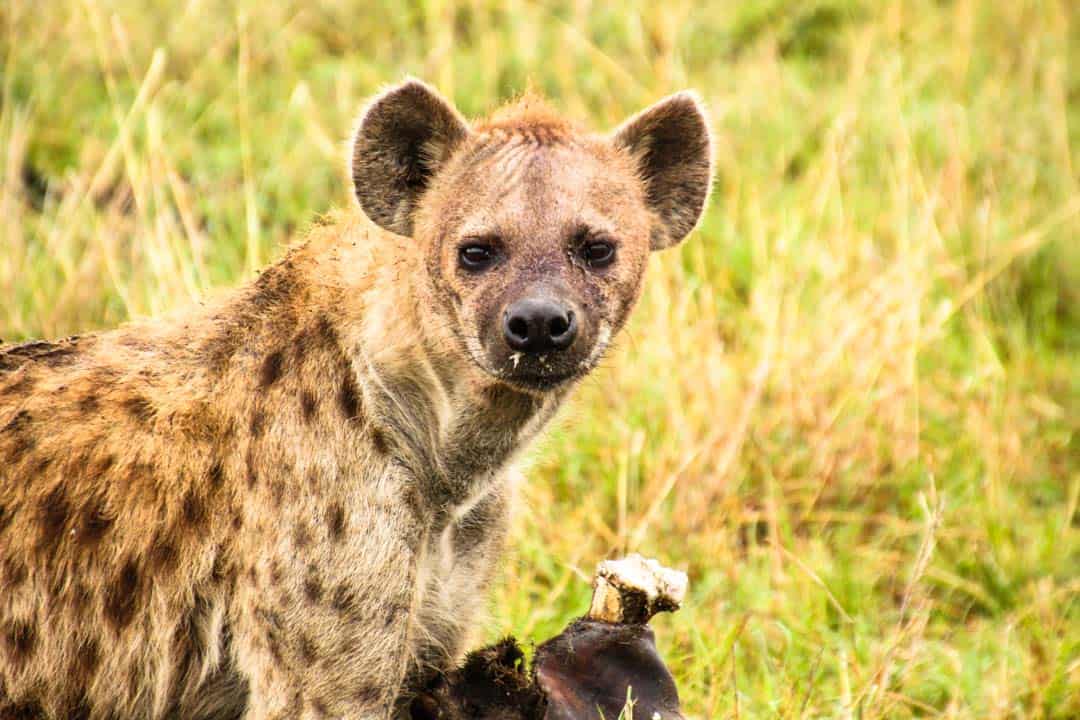
Good to know: We encountered the ‘Ugly Five’ both on safari as part of a tour through Kenya, Uganda and Rwanda with Intrepid Travel, and also during our stay at the Aruba Mara Camp in Kenya.
Read our red carpet roll-out to The Ugly Five Of Africa.
What’s your most memorable wild animal encounter? Share with us below! For more wonderful wildlife experiences, head over to our Wildlife page.
